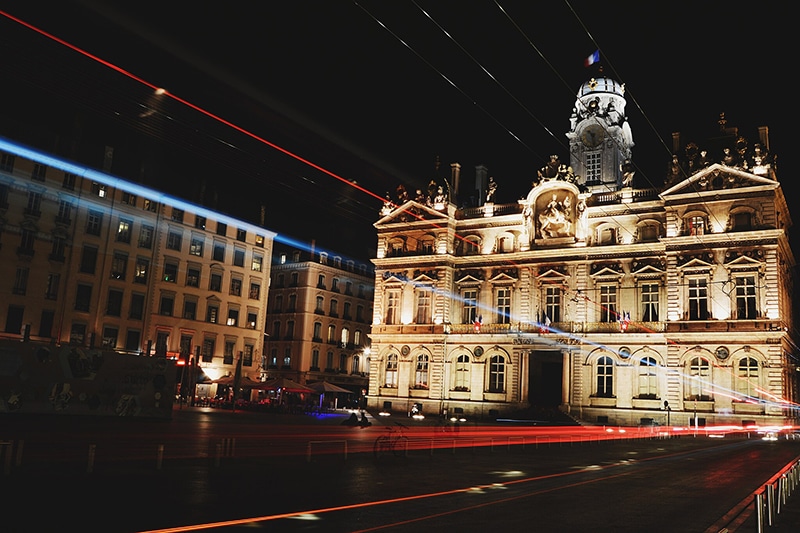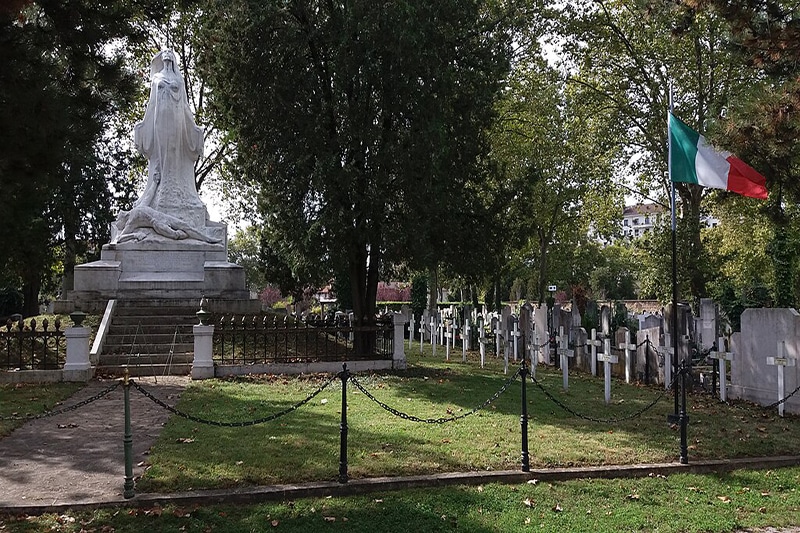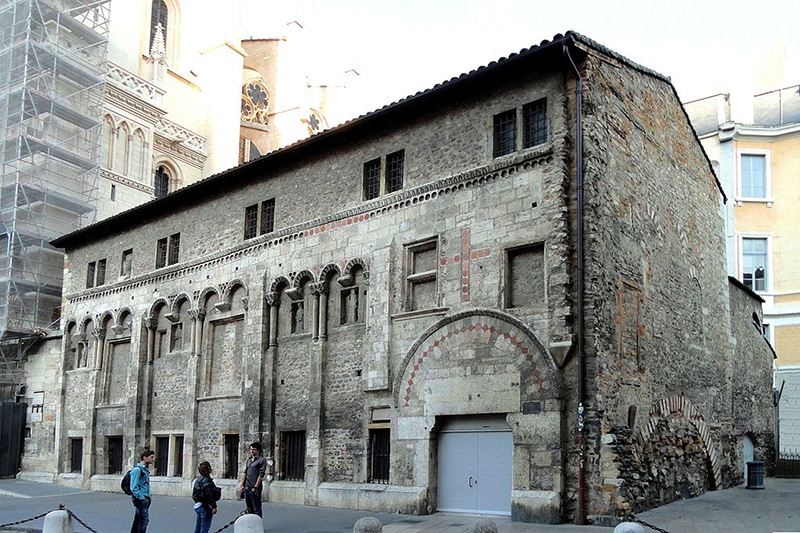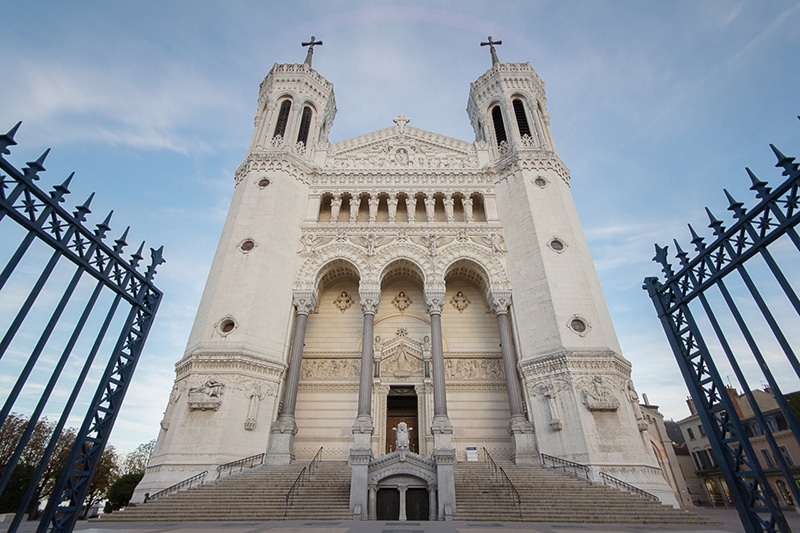
Basilica of Notre-Dame de Fourvière
Perched on Fourvière Hill, this iconic 19th-century basilica offers stunning views of Lyon and the Saône River. The interior is richly decorated with mosaics and stained glass, and it’s a symbol of the city’s spiritual heritage.

Fourvière Hill
Fourvière Hill rises above Lyon’s city center and offers panoramic views of the entire city, including the Rhône and Saône rivers. Often referred to as the “hill that prays”, it contrasts with Croix-Rousse, the “hill that works.” It’s a place where Lyon’s spiritual, historical, and architectural layers beautifully converge.

Mairie de Lyon
The Mairie de Lyon, also known as Hôtel de Ville, is Lyon’s historic city hall located at Place des Terreaux in the city center. Built between 1645 and 1672 and later restored by the architect of Versailles, it features stunning Baroque and Classical architecture. The building houses the Mayor’s office and city administration, and plays a key role during cultural events like the Fête des Lumières. It’s a must-see landmark known for its grand façade, elegant sculptures, and nighttime illuminations.
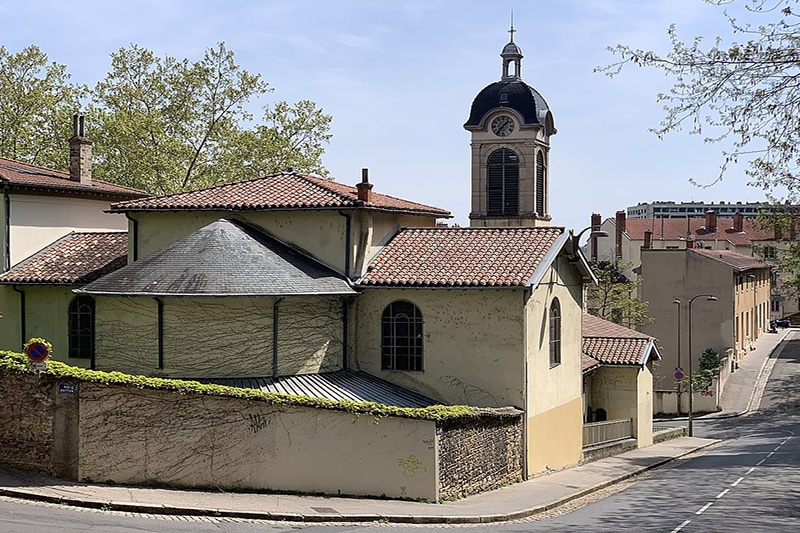
Église Saint-Eucher de Lyon
The Église Saint-Eucher de Lyon is a Roman Catholic church located at 68 rue Eugène Pons in the 4th arrondissement of Lyon, France, within the Croix-Rousse district. Dedicated to Saint Eucher, a 5th-century bishop of Lyon known for his spiritual writings and monastic life, the church holds historical significance.
Constructed in 1803, the church’s initial design was by architect François Pascalon and later completed by Joseph Forest. Its architecture reflects the ecclesiastical styles of the early 19th century. Notably, the church houses an organ built in 1869 by renowned organ builder Joseph Merklin, adding to its cultural and musical heritage.
The Église Saint-Eucher is part of the Paroisse Saint-Eucher within the Archdiocese of Lyon. It continues to serve the local community, hosting regular masses and religious events. The church’s location near landmarks like the Jardin Saint-Eucher and its proximity to the Parc de la Tête d’Or make it a serene spot for both worshippers and visitors interested in Lyon’s religious and architectural history.
Monument des Italiens
The Monument des Italiens in Lyon is a commemorative memorial located in the Cimetière de la Guillotière, honoring the Italian soldiers, volunteers, and immigrants who played a significant role in Lyon’s history, particularly during the World Wars. It stands as a tribute to the strong ties between Italy and Lyon, reflecting the contributions of the city’s vibrant Italian community. The monument is a site of remembrance and pride, often visited during commemoration ceremonies and Italian national holidays.
Manécanterie de Lyon
The Manécanterie de Lyon is one of the oldest buildings in Lyon, located next to the Cathédrale Saint-Jean in the historic Vieux Lyon district. Dating back to the 11th century, it originally served as the bishop’s residence and later became a school for cathedral choristers (hence the name “manécanterie,” meaning choir school). The building features beautiful Romanesque architecture, with arched windows and a richly sculpted façade. Today, it is part of the Lyon Cathedral complex and occasionally hosts exhibitions or cultural events, standing as a rare and preserved example of medieval Lyon.
Rhône River
The Rhône River is one of the two major rivers flowing through Lyon, the other being the Saône. It enters the city from the northeast and flows southward, dividing Lyon’s Presqu’île (peninsula) from the modern business and residential districts to the east. The Rhône is lined with scenic promenades, bike paths, and green spaces like the Berges du Rhône, making it a popular spot for walking, cycling, and riverside picnics. Its dynamic flow contrasts with the calmer Saône, and together, they shape Lyon’s unique geography and charm.

